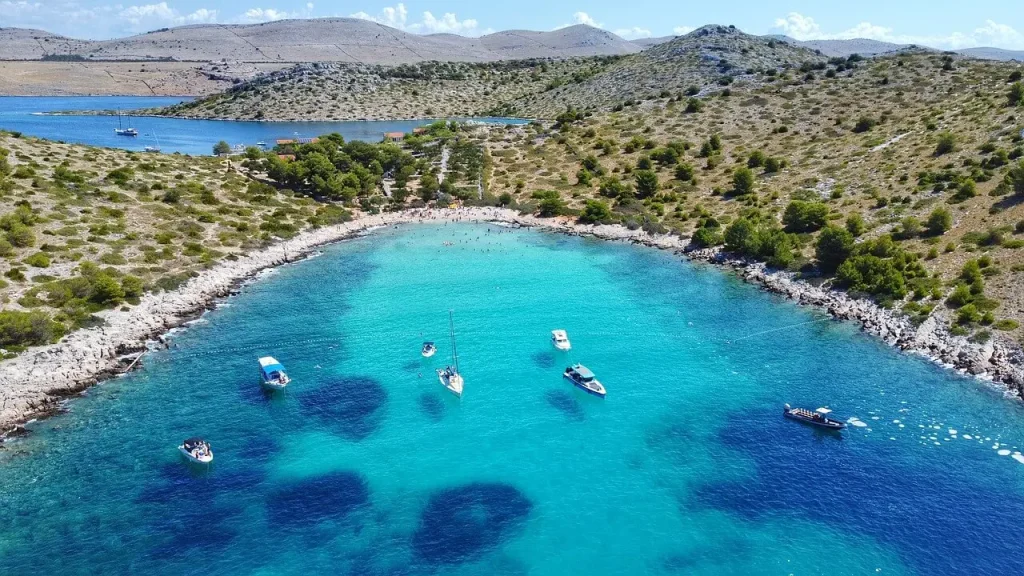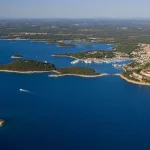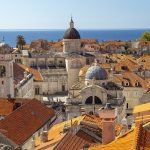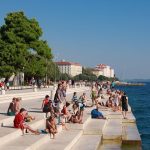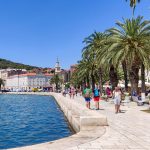Namely, 13.8 million arrivals and 84.1 million overnight stays were realized in Croatia last year, reports Slobodna Dalmacija.
Compared to 2020, there are 77 percent more arrivals and 55 percent more overnight stays.
At the same time, foreign tourists realized 71.9 million overnight stays and domestic tourists had 12.3 million overnight stays. This is a continuation of the trend from 2020, in which domestic tourists crossed 15 percent of all arrivals for the second year in a row and had 13.3 percent of all overnight stays in 2020 and 14.5 percent a year later.
The pandemic deterred many from traveling abroad, so many tourists spent their vacation on the Adriatic.
According to the number of overnight stays, the results from recent years were achieved. The only better period was from 2017-2019. Last year reached 2017 with a 2.4 percent difference as 86.2 million overnight stays were realized in that year.
“On the other hand, 2021 set a record in the size that is the goal of every tourism policy – the average number of stays exceeded six nights per tourist for the first time in tourism history. Moreover, by the end of the third quarter, the average number of overnight stays was 6.7, close to a 7-day average stay. This speaks of the growing interest of tourists to stay in Croatia, which, thanks to the efforts of tourism workers, local communities, and the hospitality and tourism sector has more to offer than the sun and sea,” says private consultant Ivica Žuro.
Most tourist overnight stays were recorded in Istria (23.5 million), Split-Dalmatia (15.5 million), and Primorje-Gorski Kotar County (15.3 million).
They are followed by Zadar County (12.7 million overnight stays), Šibenik-Knin County (5.9 million), and Dubrovnik-Neretva County (5.4 million). The destinations that attracted the most visitors were Zagreb (638,000 arrivals), Rovinj (549,000), Dubrovnik (543,000), Split (529,000) and Poreč (431,000 arrivals).
Looking at the markets in 2021, most arrivals were made by Germans (2.9 million, 84 percent growth compared to 2020), domestic tourists (2.3 million or 41 percent more than in 2020), Slovenes (1.2 million, 18% growth compared to 2020), Austrians (1.1 million, 180 percent growth compared to 2020), Poles (1 million, 50 percent growth compared to 2020) and Czechs (775.00 or 50 percent more than in 2020).
Compared to 2020, there were 78% more Italians, 100% more Hungarians, 168% more French, and 324% more Dutch.
Central and Eastern Europe is still our primary market, especially compared to the record 2019. Poles achieved 8% more overnight stays; Germans are on the same number, Czechs achieved 97% of pre-pandemic overnight stays, while Slovenians and Austrians achieved about 82% of overnight stays from 2019.
Most overnight stays by type of accommodation were recorded in households (32.1 million), camps (17.4 million), and hotels (15.7 million). In addition, 3.1 million overnight stays were realized in the nautical charter segment. Compared to 2020, the highest traffic growth was achieved in hotels (+124 percent), camps (+92 percent), nautical (+87 percent), and household facilities (+45 percent).
According to the Croatian National Tourist Board, in the first nine months of 2021, revenues from foreign tourists amounted to 8 billion and 268 million euros, representing a growth of 90% of revenues from the same period in 2020 (the first corona-pandemic year). Compared to the first nine months of 2019, 88% of revenues were generated.
During the summer months and the third quarter of 2021, revenues from foreign tourists amounted to 6 billion and 775 million euros, an increase of 100% of revenues generated during the same period in 2020.
For more, check out our dedicated travel section.

